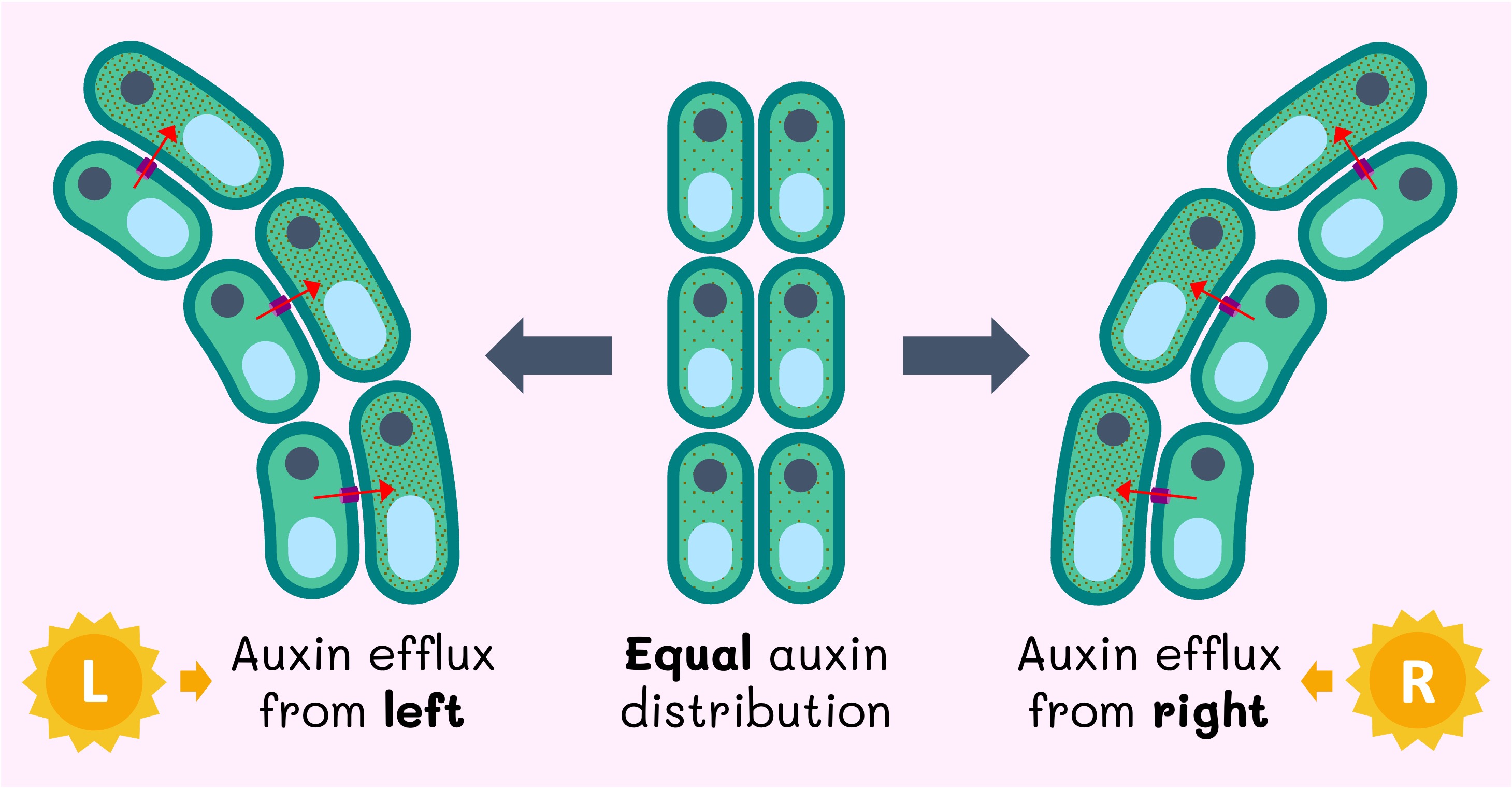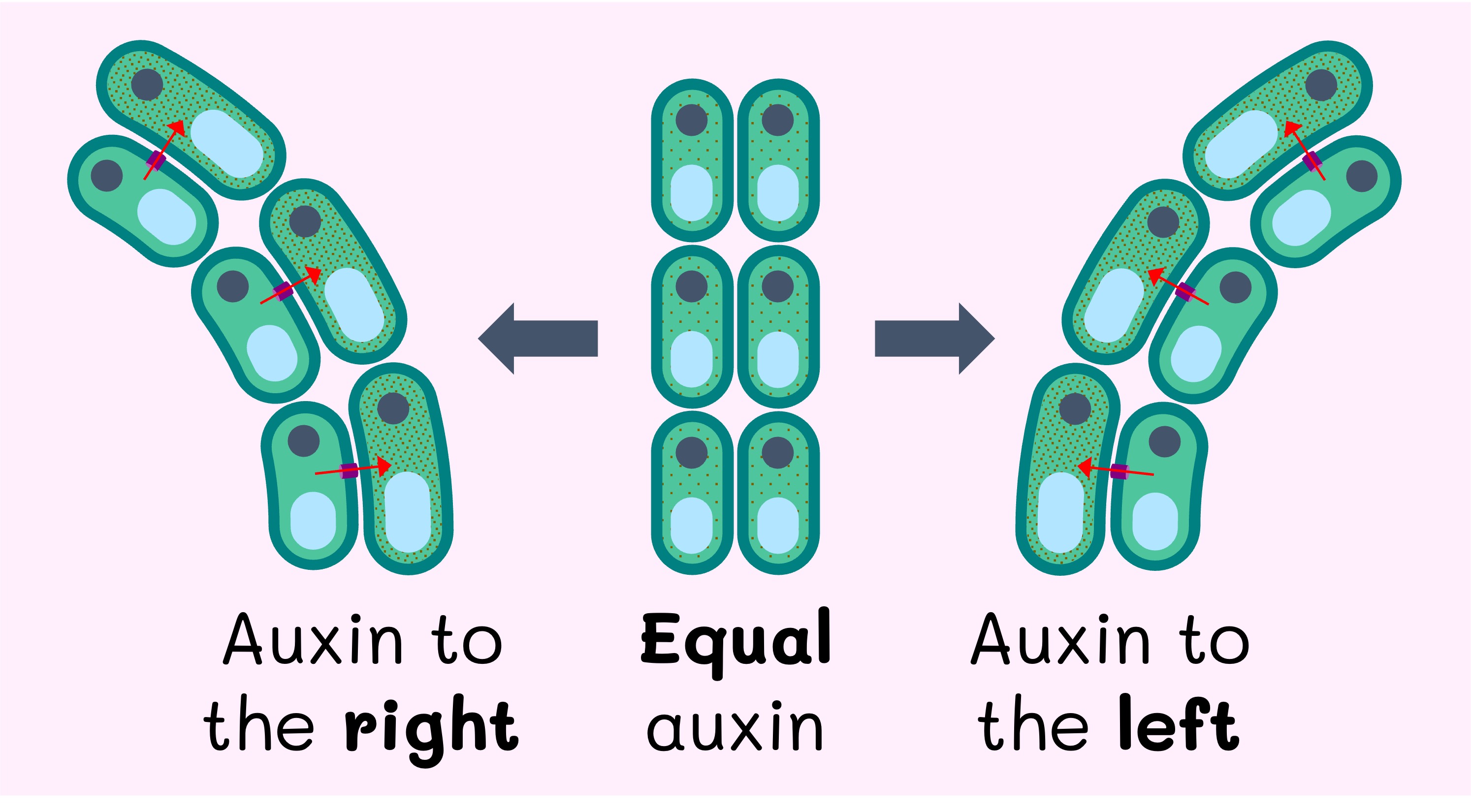

Phototropism
Tropisms describe the growth or turning movement of a plant in response to a directional external stimulus
-
A tropic response can be either positive (grow towards stimulus) or negative (grow away from stimulus)
-
Examples of tropisms include phototropism (light), geotropism (gravity), hydrotropism (water) and thigmotropism (contact)
Phototropism is the growth movement of a plant in response to a unidirectional light source
-
Light receptors (phototropins) in plant shoots trigger the redistribution of auxin to the dark side of the plant (via the coordinated positioning of auxin efflux carriers)
-
Auxin promotes cell growth and elongation of the shaded cells, causing the shaded side of the plant to become longer relative to the illuminated side of the plant
-
This results in the bending of the shoot tip towards the source of light (positive phototropism)
Role of Auxin on Phototropism


Tropic Response in Seedlings
Tropisms can be investigated in seedlings via either qualitative observations or quantitative measurements (e.g. angle of curvature)
-
Seedlings can be grown under various light conditions (either different intensities or different wavelengths)
-
Seedlings can be manipulated to control phytohormone distributions (e.g. shoot tip removed or covered up)
-
Seedlings should be compared against a control group (no external stimulus) to establish the extent of the tropic response
Tropic responses will change as the direction of the stimulus is altered (e.g. shoots will follow the trajectory of the sun over the course of the day)
Phototropism Timelapse




